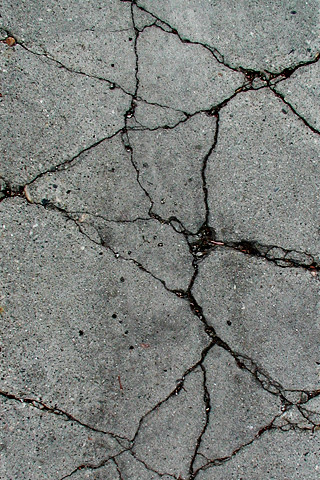New concrete technology can be crack resistant
Cracking can be prevented with new concrete technology. (Photo Credits)
There are many reasons why concrete can crack, and the good news is this can entirely be prevented. Thanks to the new technology in concrete mix, some types of concrete can resist the all-too-common unsightly gaps. National Ready Mix Concrete Association
New Atlas shared this New Generation Concrete Technology that bends instead of cracks.
“Concrete may generally be a good choice for sidewalks, but it is a brittle material – this means that it needs to be poured thick, in order to keep those sidewalks from cracking under pressure. Scientists from Singapore’s Nanyang Technological University, however, are developing an alternative. They’ve created bendable concrete that they say could be easily applied in the form of relatively thin, light paving slabs.”
Check out the photos here.
Other means to prevent cracking
The website Commercial Real Estate shared information on how to prevent cracking.
“There are technologies that can address the problem of steel corrosion, such as cathodic protection, in which the entire structure is connected to a rust-inhibiting electric current. There are also interesting new methods to monitor corrosion, by electrical or acoustic means. Another option is to treat the concrete with a rust-inhibiting compound, although these can be toxic and inappropriate for buildings. There are several new non-toxic inhibitors, including compounds extracted from bamboo and bacterially derived ‘biomolecules.’”
Read the whole article here.
You may also want to read:
- San Diego DiamondAce Concrete Contractors
- Read about Decorative Concrete Hollow Blocks
- What happens with tree roots and concrete
For the website The Constructor, prevention is the key in avoiding cracks in concrete.
“A low water cement ratio will affect the quality of concrete. W/C ratio is weight of water to the weight of cement used. A lower w/c ratio leads to high strength in concrete and lesser cracks. W/C ratio shall not exceed 0.5 in concreting, which reduces the workability of concrete which can be covered by use of plasticizer or superplasticizer. Less water content increases the durability of concrete Concrete expands and shrinks with changes in moisture and temperature. The overall tendency is to shrink. Shrinkage is the main cause of cracks, when concrete hardens it evaporates the excess water and thus shrinks, so lesser the water content, lesser is the shrinkage.”
Check out the whole post here.
Cracks in concrete are unsightly but it can be prevented.
http://www.concrete-contractors-sandiego.com/all-about-cracks-in-concrete/embed/#?secret=m8O9nzB94C
The post How to prevent cracks in concrete appeared first on Concrete Contractors San Diego.

No comments:
Post a Comment